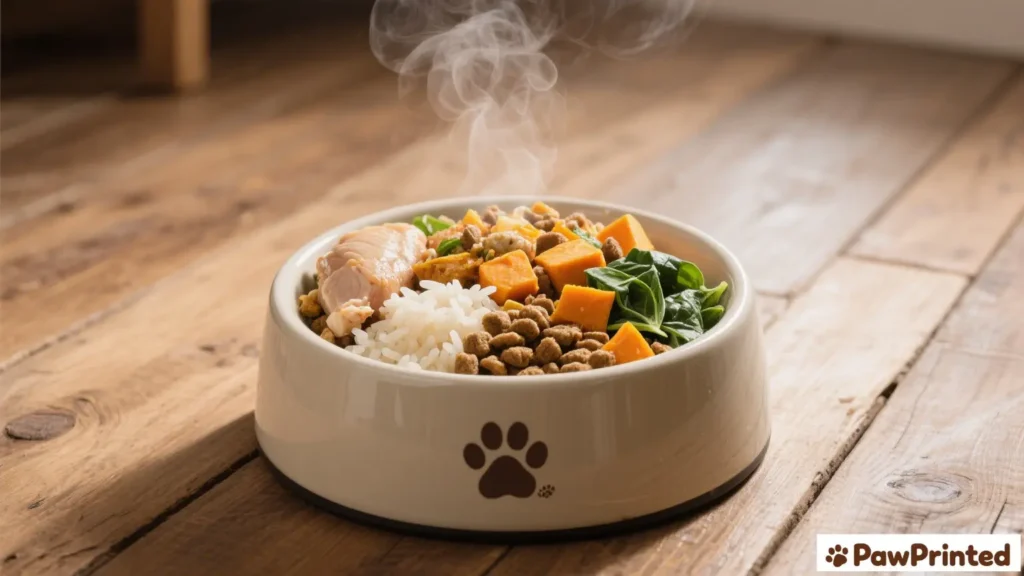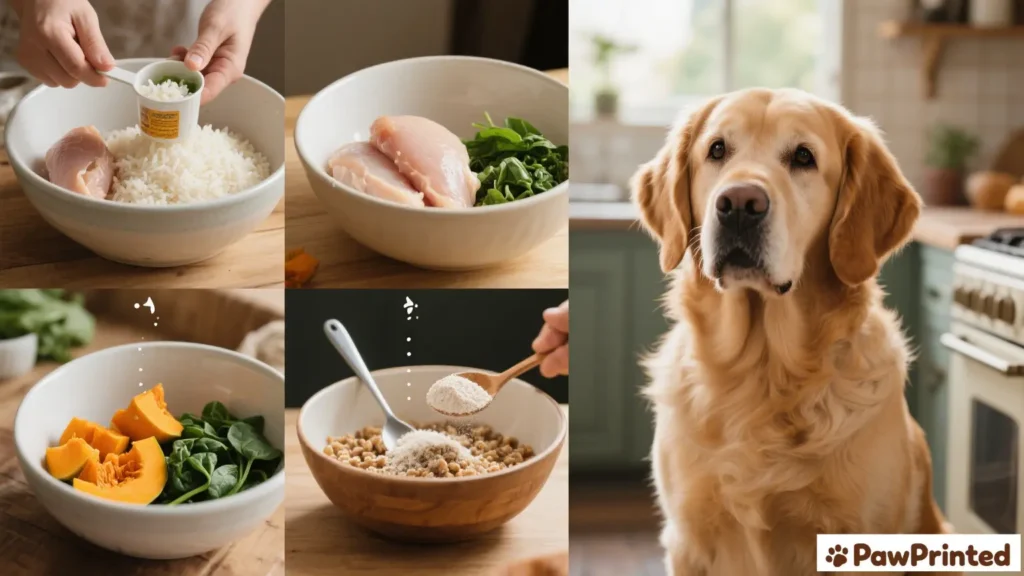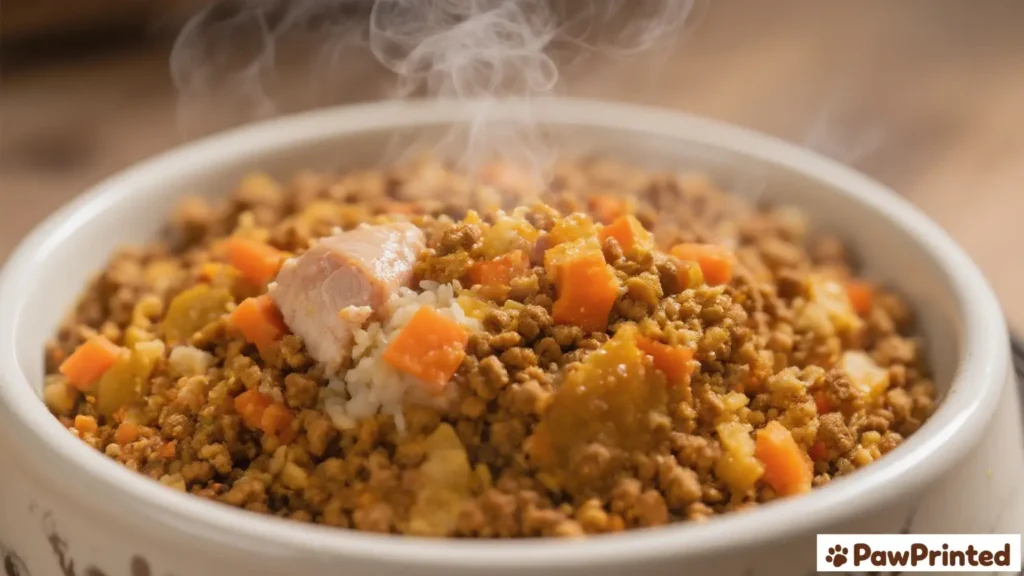Big dogs move like poetry—until excess weight and racing mealtimes start stealing the fun. Our vet framed it simply: large breeds need measured calories, joint-support nutrients, and kibble that slows the wolf-down. We tested a tight circle of formulas and tracked what actually helped our big-dog friends stay springy, not sore. Here’s the calm, practical playbook we now share with every large-breed family.

Red flag — call your vet: rapid weight gain or loss, persistent limping or stiffness, frequent vomiting after fast eating, labored breathing at rest. Large breeds carry mass; don’t wait if mobility or appetite changes suddenly.
What Worked for Us (Story-Based Picks)
Our baseline needed to be predictable. Hill’s Science Diet Large Breed Adult was the scoop we could trust—sensible calories for big frames and built-in joint support. Bowls emptied without post-meal crashes, and weekend hikes didn’t cost us two days of stiffness.
For active dogs that burn hot, we rotated to Purina Pro Plan Large Breed (Chicken & Rice). The high-protein profile and digestibility paired well with longer play, and stools stayed consistent—our favorite sign that the gut is on board.
When weight drifted upward—holidays, anyone?—we ran a 6–8 week block with Blue Buffalo Large Breed Healthy Weight. Calorie control and L-carnitine helped us trim portions without starting food fights. Energy stayed steady; hips said “thank you.”
Some families wanted a precisely balanced, brand-specialized option. Royal Canin Large Breed Adult hit that brief—targeted macro balance and big-dog kibble geometry to slow the inhale-exhale mealtime sprint.
For “natural leaning” shoppers, Wellness Complete Health Large Breed brought joint-support extras (glucosamine/chondroitin) with a tidy ingredient deck. It plugged neatly into our notes-first routine when we wanted variety without chaos.
Why Large Breeds Need Special Care
Joint support: big frames mean big forces—look for formulas with glucosamine, chondroitin, and supportive omegas. Calorie control: fewer extra calories = less load on hips. Kibble engineering: large pieces slow gulping, improve chewing, and help digestion. Consistency: one change at a time; track weight, stools, and energy weekly.

Our Large-Breed Feeding Routine
Step 1: Pick a daily base (Hill’s Large Breed Adult or Purina Pro Plan Large Breed). Measure by calories, not “cups.”
Step 2: Use a slow-feeder bowl to pace meals and reduce post-meal burps or vomiting.
Step 3: If weight creeps up, run a focused block with Blue Healthy Weight (Large Breed) for 6–8 weeks; recheck portions.
Step 4: Log weekly weight, gait notes (stairs, jumps), and stool quality. Adjust with your vet if progress stalls or soreness lingers.

Comparison Table: Large-Breed Picks
| Option | Why It Helps | Best For | Link |
|---|---|---|---|
| Hill’s Large Breed Adult | Balanced calories + joint support | Everyday big-dog base | go/hills-large-breed-adult |
| Purina Pro Plan Large Breed | High protein, digestible, steady stools | Active large dogs | go/purina-large-breed-dry |
| Blue Healthy Weight (Large) | Calorie control + L-carnitine | Weight-prone big dogs | go/blue-large-weight |
| Royal Canin Large Adult | Breed-size specific macro balance | Precision-minded families | go/royal-large-adult |
| Wellness Large Breed | Natural leaning + joint nutrients | Ingredient-focused owners | go/wellness-large-breed |

FAQ
Do large breeds really need different food? Yes. Large-breed formulas balance calories for big frames, include joint-support nutrients, and use larger kibble to slow eating. These tweaks reduce wear-and-tear and help digestion over the long run.
Keep weight in a healthy range and choose foods with glucosamine, chondroitin, and supportive omegas. If weight is trending up, try a focused block with a large-breed healthy-weight formula like Blue Healthy Weight (Large) while measuring portions carefully.
They can, but it may encourage gulping and upset digestion. Large-breed kibble slows intake, improves chewing, and may reduce post-meal vomiting in fast eaters.
Introduce changes slowly and keep variables steady for 7–10 days. If diarrhea or vomiting persists, consult your vet and see our guides on sensitive-stomach dry foods and dog food for diarrhea.
Yes—growth-stage calcium and energy control matter for developing joints. Ask your vet for specific targets by breed and monitor growth curves closely.
If you don’t want to cook daily, a large-breed dry base plus measured portions and a slow-feeder bowl can protect joints while keeping meals calm.
Follow PawPrinted On Pinterest
“Want more dog food recipes, grooming hacks, and health tips? Follow us on Pinterest and save your favorite ideas — we share fresh inspo every week!”.

